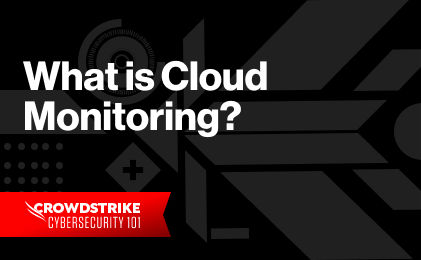Monitoring is an essential part of the maintenance stage in the software development lifecycle. However, as businesses shift their operations to cloud-based environments, monitoring has become even more critical for application security, reliability, and availability.
Amazon Web Services (AWS) offers various monitoring tools to assist users in monitoring their cloud systems. Its two most widely used and essential monitoring tools are CloudTrail and CloudWatch. In this post, we’ll compare these two tools, exploring their key features, capabilities, differences, and similarities.
Learn More
Read this article to learn the benefits of implementing infrastructure observability on AWS. We will also explore what AWS offers in this area, along with external services that you can integrate with your AWS account to enhance your observability capabilities.
What is AWS CloudTrail?
AWS CloudTrail captures a complete record of all API activity within an account, including information on the user or service responsible, timing, and changes made. This provides a comprehensive audit trail for any changes in the AWS infrastructure. It maintains a complete event history of all activities within AWS accounts, making CloudTrail a vital tool for compliance and security-related purposes.
In instances where a user notices a missing resource in their AWS account, CloudTrail helps with investigating what action terminated the resource, who (or what) executed the action, and when the execution occurred.
CloudTrail logs three types of events:
- Management events affect the AWS environment (such as creating a new IAM user, launching an EC2 instance, or modifying security groups).
- Data events involve data within an AWS service (such as retrieving an object from an S3 bucket, downloading a file from an EC2 instance, or modifying the contents of a database).
- Insight events provide information about the performance and operational health of an AWS account (such as AWS service quotas, security best practices, and compliance checks).
Only management events are accessible without additional costs, while data and insight events may incur additional costs.
Key features
The key features of CloudTrail include:
- Generates a detailed event history of all activities in an AWS account.
- Allows log forwarding to CloudWatch Logs or S3 buckets for storage and analysis.
- Supports integration with other AWS services, such as SNS and CloudWatch, to facilitate automated architectures.
- Provides log file integrity validation to ensure log file authenticity and preservation.
What is AWS CloudWatch?
AWS CloudWatch is a monitoring service that collects metrics, logs events, and provides alarms. CloudWatch provides real-time monitoring of AWS resources and applications, allowing AWS users to optimize their systems for performance and cost.
CloudWatch comprises various key components, all working in tandem to form a complete monitoring solution. Let’s examine these components.
CloudWatch Metrics
CloudWatch Metrics use quantitative data points to measure the performance of AWS resources and applications. With CloudWatch Metrics, users can monitor the health and performance of their systems. For example, they can measure CPU usage, network traffic, and disk/RAM usage.
CloudWatch Alarms
CloudWatch Alarms trigger actions when specific metrics cross critical threshold values. For example, a user might create a CloudWatch Alarm when the CPU utilization of an EC2 instance exceeds 80%. The alarm’s triggered action may include scaling up the application to support the added load and sending an email notification to the DevOps engineer on call.
CloudWatch Events
CloudWatch Events trigger actions in response to specific events. For example, a CloudWatch Event may be set up to trigger every time a new EC2 instance launches. The resulting action may invoke a Lambda function or publish to an SNS topic.
Note that AWS recommends that its users manage their events through AWS EventBridge instead of CloudWatch Events.
CloudWatch Logs
CloudWatch Logs collect, analyze, and store log files from custom applications on or off AWS cloud or AWS services (such as CloudTrail or Lambda). In addition, CloudWatch Logs analyze and filter log data to troubleshoot issues and monitor application performance.
Other CloudWatch features include:
- CloudWatch Dashboards provide a customizable view of metrics and alarms.
- CloudWatch Unified Agent is used for collecting custom metrics and logs.
- CloudWatch Synthetics test and monitor application endpoints.
Comparing AWS CloudTrail and AWS CloudWatch
CloudTrail and CloudWatch are both monitoring services offered by AWS with different features and capabilities suitable for different use cases.
CloudTrail is used in auditing and compliance monitoring as it captures all API activity in an AWS account. An organization might use CloudTrail to track all API calls made in its AWS account to ensure that resources are only accessed by authorized personnel.
It’s worth noting that although CloudTrail captures API activity events and generates logs, it lacks the ability to analyze these logs for visualization or to create automated processes. To analyze CloudTrail logs and establish automated processes, it’s necessary to transfer them from CloudTrail to CloudWatch Logs. Within CloudWatch Logs, you can examine the logs, create alarms, and trigger notifications.
On the other hand, CloudWatch collects, tracks, and monitors metrics, log files, and AWS resource events. It also provides alarms to notify when specific events occur. An organization might use CloudWatch to monitor the health and performance of its applications and to facilitate more effective troubleshooting should an issue arise.
The following points outline some additional distinctions between the two services:
| CloudWatch | CloudTrail | |
|---|---|---|
| Free features |
|
|
| Paid features |
|
|
| Data frequency |
|
|
Summary
CloudTrail and CloudWatch are two essential monitoring tools offered by AWS with different functionalities. CloudTrail records all API activities in an AWS account, making it suitable for auditing and compliance purposes. CloudWatch is primarily used for monitoring application and resource performance, alerting when certain metrics require attention, and finding optimization and cost-reduction opportunities.
Combining the strengths of both services achieves a comprehensive and automated monitoring and response system for your AWS environment.







